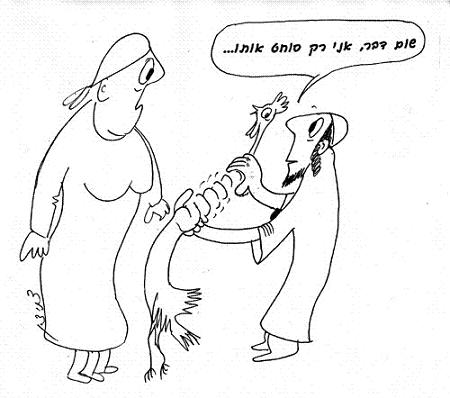
Chazal were quite specific in the many details of ritual slaughter: the laws of the knife, of how the slaughter is to be done, and where on the animal the slaughter is to take place. These laws were determined, but the Scriptures completely refrained from making any specific demands for slaughter. In fact, the Torah only forbade an animal which died of illness or age, a neveilah — “”You shall not eat anything that dies of itself” (Deuteronomy 14:21) and an animal which has been preyed upon and killed by another animal — “You shall not eat meat torn by beasts in the field” (Exodus 22:30), but when a person kills a pure animal, one may eat it without observing the details and special demands, for it is written, “Whatever man of the children of Israel, or of the strangers who dwell among you, who hunts and catches any animal or bird that may be eaten, he shall pour out its blood and cover it with dust” (Leviticus 17:13). This means that one who hunts and catches an animal, even if he fired an arrow into it and killed it, many eat his catch as long as its blood is covered with dust. Therefore one of the scholars, Rav Kahane, asked how we know that slaughter must mean cutting the throat. Answer: It is written in the laws of sacrifices “And he shall slaughter [shachat] the bull” (Leviticus 1:5).
The word shachat divides in two — shach and chat. Shach means bends and chat means purifies. They explained: The slaughter must take place where the animal bends, the throat, and it is there you can purify it through slaughter. The scholars asked: If the slaughter must take place at the place where the animal bends, perhaps that is the tail, for the animals also bend their tails. Answer: Since the word is shach bends, one may imply that before the bending the animal was straight, and the tail is customarily bent, while the neck is sometimes bent and sometimes straight. The scholars continued to ask: Perhaps the place for slaughter is the ear, for sometimes the ear is upright and sometimes it is bent. Answer: The ear is not an organ whose cutting could lead to the animal’s death. The scholars went on to ask: Perhaps the demand is to start the slaughter at the ear and continue until one cuts an organ which would cause the animal’s death. Answer: That is true, so we cannot bring proof from this verse that slaughter takes place at the neck; this law was given by oral tradition from earlier generations. A different sage, Rab Yamar, tries to bring proof from a different verse which shows slaughter to take place at the neck, for it is written “Then you may slaughter [
(Babylonian Talmud, Tractate Chulin 27a)
